This post is updated from my original of March 2020—as of March 2021, nearly 40 peer-reviewed papers discuss melatonin for COVID-19 and at least four clinical trials are underway. Forty papers! reflects a lot of research on melatonin and one virus! The bottom line? Melatonin stands out as a strong therapeutic due to its ability to improve the immune response, reduce inflammation, reduce oxidative stress, defend cell mobility and efficiently combat the cytokine storm (overproduction of toxic immune chemicals) and sepsis. Because of these properties, it’s thought that melatonin can both prevent infection and minimizes symptoms should a person become infected. That said, melatonin is not magical armour so please use the EPA’s compiled a list of disinfectants effective against this SARS and other Flu Viruses, keep yourselves safe; resist the urges to “boredom eat” or “stress eat” (junk) or watch the media (who “cherry pick” the worst cases to create nervousness and fear IMO).
Warning: might be a technical discussion ahead if you are bold (it’s not too bad but let me know).
A recent, large retrospective study demonstrated that the use of melatonin in intubated patients with COVID-19 significantly reduced the risk of death (HR 0.1; p=0.0000000715—a p value less than 0.05 describes how likely a particular set of observations were caused by the therapy—this may be one of the smallest p values I’ve seen, ever, pretty convincing).
What is the current evidence for melatonin and COVID-19?
COVID-19 is a systematic disease impacting multiple cell types, tissues and organs, so knowledge of the complex interplays between the virus and other diseases is key to understanding COVID-19-related complications and identifying repurposable treatments. —Feixiong Cheng, Ph.D., assistant staff in Cleveland Clinic’s Genomic Medicine Institute and lead author on the study.
There are four controlled clinical trials under way but the results are not yet in. However, looking back over records from several thousand COVID positive cases from mild to less than 1 percent severe, the Cleveland Clinic found:
- autoimmune (especially inflammatory bowel disease), pulmonary (e.g., asthma, chronic obstructive pulmonary disease and pulmonary fibrosis), cardiovascular, and neurological (e.g., depression and neuropathies) predicted heightened COVID infections and symptoms. Methods that improve these health issues lessen rates of infection and lessen symptoms if infected.
- individuals controlling these symptoms with diet and lifestyle had less severe symptoms.
- bioavailable melatonin usage was associated with a 28% reduced likelihood of a positive laboratory test result for SARS-CoV-2 after adjusting for age, sex, race, smoking history, and various other diseases (diabetes, hypertension, coronary artery disease, and COPD); a 52% reduced likelihood of a positive laboratory test result for SARS-CoV-2 in black Americans; and a significantly reduced likelihood in diabetics (but not asthmatics or cardiovascular disease).
- bioavailable melatonin controlled the “cytokine storm”.
- other “repurposed” medicines such as hydroxychloroquine, steroids, and others that address viral symptoms were inconsistent. Of them, Remdesivir had potential promise but far below melatonin and should not be used as a routine treatment for COVID-19 patients in critical care wards.
What is a “cytokine storm”?
When our innate immune system—the first line surveillance system—senses pathogens, certain types of white blood cells are activated and release inflammatory hormones (cytokines including IL-1β, substance P, etc.). This proinflammatory cytokine, IL-1β, initiates a low oxygen response, a release of fluids, and a release of additional cytokines and compounds aimed at bringing in additional layers of the immune system.
Cytokines induce fever, cause the infected person to feel tired and want to sleep (a good thing for healing), can induce more “grumpiness”, joint aches, all the flu symptoms. Proinflammatory cytokines help defend us from invading viruses by inhibiting replication and lessen infection. This allows the rest of your immune system, especially a type of white cells called macrophages, to arrive and clean out the damaged cells and pathogen invaders. Perfect.
But… if the cytokine response becomes excessive, the response has the capacity to worsen the infection and help it spread to other tissues and organs. Excessive cytokines can damage organs and tissues. Many lines of research suggest that melatonin can stop the “cytokine storm” from becoming excessive.
Sleep, Melatonin, Flu, and COVID-19
Melatonin is made in small amounts by the pineal gland (a gland involved in the sleep cycle), retina, thymus, bone marrow, and certain white blood cells; and in large amounts in the intestines.
Your peak production is between 2-3:00 AM if you get 8-9 hours of consecutive sleep. It is made from tryptophan (an amino acid known to promote the rest, heal, repair, and digest… parasympathetic nervous system). We need good sleep. Melatonin helps resolve sleep problems if it is right for you.
Foods are unbelievably safe. Melatonin is made from tryptophan; foods highest in tryptophan (in order) include:
|
|
If appropriate for you, supplemental melatonin in sublingual form is readily absorbed; in tablet form it isn’t absorbed well. Note: Although generally recognized as very safe; melatonin interacts with most prescription and OTC sedatives, diabetics should monitor their blood sugar carefully, and pregnant women should consult with their OBGYN.
A snapshot of other COVID-19 natural prevention and remedies from whole foods:
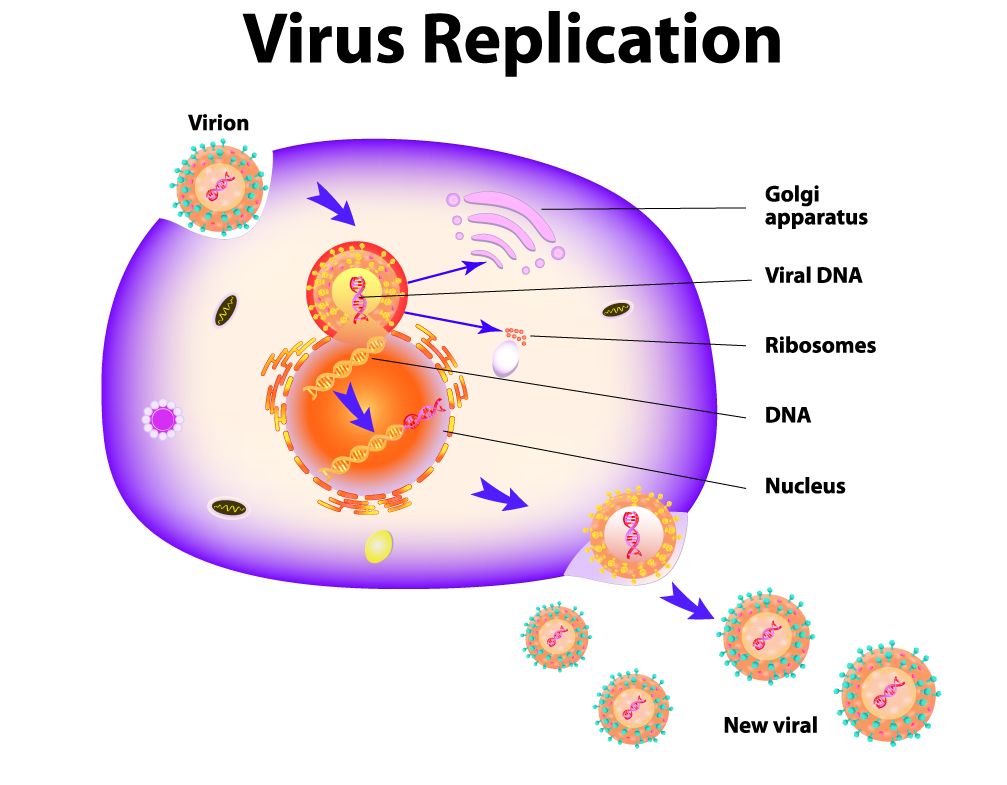 In order to cause disease, any virus must enter a human cell, make more copies of itself, damage the cell, which allows it to escape to infect adjacent cells. For COVID-19, there are 3 enzymes that play a critical role in this sequence. They are named ACE-2, Furin and 3-CL protease.
In order to cause disease, any virus must enter a human cell, make more copies of itself, damage the cell, which allows it to escape to infect adjacent cells. For COVID-19, there are 3 enzymes that play a critical role in this sequence. They are named ACE-2, Furin and 3-CL protease.
- ACE-2 inhibitors (used medically to control blood pressure) increase the risk of infection and symptom severity. Already reduced in attempt to control blood pressure, COVID-19 produces additional “ACE-2 exhaustion”. Some scientists believe that ACE-2 exhaustion is responsible for the severity of pneumonia and for catastrophic effects like heart failure, blood clots and circulatory collapse.
- 3-CL protease helps the corona virus family reproduce and spread. It has been called “the Achilles heel” of corona virus. Some dietary flavonoids inhibit 3CL protease in laboratory studies and for that reason may limit severity of infection. Evidence-based flavonoids include:
- Herbacetin is powerful against all viral infections. Consume a few teasoons of flax seed or powder every day. Plus, flax is a great source of omega-3 fats and helps keep you regular.
- Pectolinarin is found in berries, apples (except red delicious), and pomegranite seeds. Pectin from berries is a good medicinal food due to its antioxidant, anti-inflammatory, antidiabetic, and antitumor activities; these have been tested in animal and human studies. Added sugar in jams blocks this effect. St. Dalfours brand makes jam without sugar and is available commercially and at New Sagaya here in Anchorage.
- Biacalin found in most plants and especially in the herbal remedy skullcap—Scutellaria baicalensis and Scutellaria lateriflora—is particularly effective with asthma, lung, and nervous system disorders associated with SARS-CoV-2. Not all herbal preparations are created equal—talk to me please about testing professional grade options.
- Rhoifolin exerts many biological activities including anticancer, antidiabetic, hepatoprotective, antirheumatic, antibacterial, and antiviral properties. Originally isolated from tropical Mavacia trees rhoifolin is rich in grapefruit, bergamot, lemon, lupinus, lablab beans, tomatoes, artichoke, plantains and grapes.
- Cholesterol becomes elevated primarily by consuming refined foods with added sugars and flours (including gluten free tapioca, arrowroot, etc.). Exposure to certain chemicals can also elevate cholesterol. Recent research shows that elevated cholesterol inside cells increases the infection rate of SARS-CoV-2. While many health problems are caused by cholesterol levels below 180 mg/dL, taking steps to lower cholesterol that is above 220 mg/dL is wise. Cholesterol has two primary routes of eleimination: 1. the liver via the gall bladder and bile; 2. the intestines. Optimize both by consuming plenty of fibers (see note on flax, above, and the list of nuts and seeds hugh in tryptophan), and liver friendly foods (lemons, garlic, ginger, berries, cucumbers,
Beyond hygiene and social distancing, can we block infection? Furins?
Similar to other envelope viruses (viral particles are not really “living”; they are simply DNA or RNA inside a protein envelope—truly more like microscopic parasites. Early evidence points to SARS-COV-2 virus as subverting a cell’s furin enzyme to unpack itself to infect a cell. Furins are found high in lung, liver, and small intestine but are used for many hundreds of cellular functions throughout the body. For this reason, substances that block furins directly will have enormous other detrimental effects.
Why am I bringing this up? Because research on earlier SARS / MERS viruses also suggests that adequate melatonin can stop the “cytokine storm.” Adequate melatonin also stops the same “cytokine storm” resulting from H1N1 Flu and other infections.
Furins and hypoxia—the case for fresh air and activity with any viral exposure.
During periods of low oxygen, furins become greatly elevated. What are furins? Furins are enzymes (proteins that drive specific biochemical reactions—digestive enzymes are familiar to most of us. In the human body we know about some 75,000 enzymes (and counting) that all do very specific functions like activate/inactivate hormones, help us make energy, digest our food, remove toxic waste… and, importantly, assist our immune system). What furins do is assist our immune system—when furins are at the right levels. Unfortunately, many types of viruses including HIV, Corona viruses, and seasonal flu have subverted furins and use them for their own benefit. Cancer cells also subvert furins.
And… having very high cholesterol predisposes individuals to the furins-subersive effects of virus and cancer.
The likelihood of infection become greatly elevated if low oxygen and when infection occurs, oxygen drops even lower—thus the use of testing blood oxygen (pulse-ox) in many clinics.
Strong pain medications and other drugs that slow breathing, asthma, most forms of lung disease, smoking including e-cigs, poor circulation, anemia are common sources of low oxygen. These can all be addressed through diet and lifestyle interventions.
The good news is that it is relatively easy to improve oxygenation to prevent elevated furins:
- Get fresh air. On a short hike in the Chugach yesterday, we watched five bald eagles circling and playing. Get outside. In addition to raising oxygen, the warm sun and pretty spring will lift your spirits.
- Elevate your heart rate and breath… regularly.
- Posture—we often don’t think about posture—if you stand work or sit slouching, you hinder the breathing process.
- Antioxidants allow the body to use oxygen more effectively. Choose blueberries, unsweetened cranberries, strawberries, blackberries, artichokes, green leafy vegetables…
- Essential fatty acids, especially omega-3 fats from cold water fish, walnuts, pumpkin seeds, chia seeds, flax seeds, dark green vegetables…
- Reduce and ultimately quit smoking and exposure to any other toxic air.
Putting it all together: The melatonin evidence.
As we age, if we don’t sleep well; get good sleep, follow sleep hygiene… we hasten the natural rate of melatonin decline. After puberty melatonin begins to decline. Yet melatonin plays an important role in numerous functions including sleep and circadian rhythm regulation, helping your immune system, scavenging free radicals, and a variety of antioxidant functions.
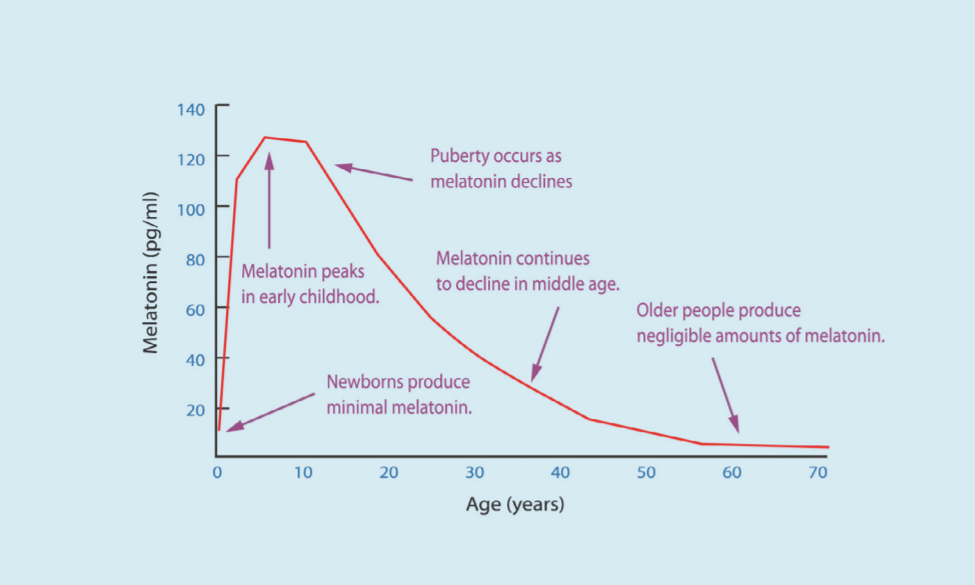
Compared to adults, especially seniors, young children can have nearly TEN times our melatonin levels.
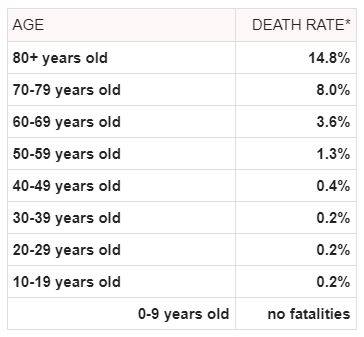
Melatonin decline and age: Coincidence? A rational therapy?
Melatonin is effective in fighting viral infections in a variety of experimental animal and human studies. Because melatonin synthesis decreases during the aging process; a decrease seen in both pineal and plasma levels of melatonin, perhaps supplementing as we age (appropriately for each individual) can improve many health concerns.
- Animals infected with H1N1 co-treated with melatonin survived better than being treated with anti-virals alone—there is not currently an evidence-based antiviral for SARS-CoV-2. While Remdesivir may be promising, it is less effective than melatonin and has unwanted and debilitating effects.
- In rodents, aging and onset of age-related diseases is slowed down with melatonin treatment.
- The aging process involves functional dysfunction of mitochondria and increased oxidative stress—as our Mitochondria, our cellular batteries malfunction (get my handout here), we feel tired, have poor organ and muscle function, often experience neuropathies, more… Melatonin scavenges the free radicals that cause oxidative stress. While too much melatonin will leave us groggy, the right amount creates a beautiful sleep cycle that leaves us energized and more resilient on waking.
- Also, cells under free radical (oxidative) stress are damaged and launch a program to die. Cell death and early aging are the same thing.
- Melatonin reduces inflammation by reducing the “cytokine storm”.
- The immune system response decreases with age. As we grow older, we face increased risk of cancer, infections, and autoimmune diseases. Due to its anti-inflammatory feature and effects on the immune system, melatonin is one of the most prominent candidates to address this.
- Viral infections are often associated with immune-inflammatory injury. Levels of free radicals/oxidative stress increase while mitochondrial energy production decreases. The bottom line: we feel sick and sicker.
The other bottom line is that we MUST balance stressors with genuine building blocks.
Talk to me. For most of us, 3-5mg daily of bioavailable melatonin is preventive. For immunocompromised clients and my chemotherapy clients, we need to be judicious, please call me.
What about vitamin C, Zinc, others?
L-ascorbic acid—the natural form found in foods (but not D-ascorbate or even N-acetylcysteine) can suppress activation of factors induced by hypoxia but only at extremely high levels achievable only by I.V. Infusion.
Meanwhile, for the rest of us, women should get 75mg daily and men 90mg. If you are pregnant or lactating, increase intake to 85mg and 120mg respectively. A 1/2-cup serving of red and green sweet peppers, broccoli, brussels sprouts, kiwifruit, strawberries and grapefruit provides from 65 percent to more than 100 percent of the daily recommended intake of vitamin C, based on consuming 2,000 calories daily.
Once a cell is infected, viruses replicate (make copies). After a certain amount of time, the cell’s membrane breaks down. Researchers believe this has to do with breaking down collagen. Adequate vitamin C helps form collagen and maintains cell integrity.
And it is vital to keep immune balance! My favorite protocol is a bioavailable Melatonin spray, Epimune complex, and a bioavailable D3-K2 spray (note: us Alaskans really never get enough high angle sunshine to make adequate vitamin D) —if you are deficient, e.g. under the healthy functional medicine level of 55 ng/mL, then your immune system is suboptimal).
Back to a happy and healthy life
If you don’t feel well, please call me. 907-222-1824 or email marie@synergynutrition.info Please look over the list of resources here. Board games, group movies, cultivating joy… so many ideas available and Chris compiled them wonderfully.
“Renew thyself completely each day; do it again, and again, and forever again.”
– Chinese inscription cited by Henry David Thoreau in Walden
Artigas, L., Coma, M., Matos-Filipe, P., Aguirre-Plans, J., Farrés, J., Valls, R., Fernandez-Fuentes, N., de la Haba-Rodriguez, J., Olvera, A., Barbera, J., Morales, R., Oliva, B., & Mas, J. M. (2020). In-silico drug repurposing study predicts the combination of pirfenidone and melatonin as a promising candidate therapy to reduce SARS-CoV-2 infection progression and respiratory distress caused by cytokine storm. PloS one, 15(10), e0240149.
Grailer, J. J., Canning, B. A., Kalbitz, M., Haggadone, M. D., Dhond, R. M., Andjelkovic, A. V., Zetoune, F. S., & Ward, P. A. (2014). Critical role for the NLRP3 inflammasome during acute lung injury. Journal of immunology (Baltimore, Md. : 1950), 192(12), 5974–5983.
Gram, A. M., Frenkel, J., Ressing, M. E. (2012) Inflammasomes and viruses: Cellular defense versus viral offense. Journal of General Virology, 93(10)
Hung, A. S., Tsui, T. Y., Lam, J. C., Wai, M. S., Chan, W. M., Yew, D. T. (2011) Serotonin and its receptors in the human CNS with new findings – a mini review. Current Medical Chemistry 18:5281–5288
Jo, S., Kim, S., Kim, D. Y., Kim, M. S., & Shin, D. H. (2020). Flavonoids with inhibitory activity against SARS-CoV-2 3CLpro. Journal of enzyme inhibition and medicinal chemistry, 35(1), 1539–1544.
Jones, H. D., Crother, T. R., Gonzalez-Villalobos, R. A., Jupelli, M., Chen, S., Dagvadorj, J., Arditi, M., & Shimada, K. (2014). The NLRP3 inflammasome is required for the development of hypoxemia in LPS/mechanical ventilation acute lung injury. American journal of respiratory cell and molecular biology, 50(2), 270–280.
Osipyants, A. I., Poloznikov, A. A., Smirnova, N. A., Hushpulian, D. M., Khristichenko, A. Y., Chubar, T. A., Zakhariants, A. A., Ahuja, M., Gaisina, I. N., Thomas, B., Brown, A. M., Gazaryan, I. G., & Tishkov, V. I. (2018). L-ascorbic acid: A true substrate for HIF prolyl hydroxylase?. Biochimie, 147, 46–54.
Öztürk, G., Akbulut, K. G., & Güney, Ş. (2020). Melatonin, aging, and COVID-19: Could melatonin be beneficial for COVID-19 treatment in the elderly? Turkish journal of medical sciences, 50(6), 1504–1512. https://doi.org/10.3906/sag-2005-356
Scholtens, R. M., van Munster, B. C., van Kempen, M. F., & de Rooij, S. E. (2016). Physiological melatonin levels in healthy older people: A systematic review. Journal of psychosomatic research, 86, 20–27.
Silvestri, M., & Rossi, G. A. (2013). Melatonin: its possible role in the management of viral infections–a brief review. Italian journal of pediatrics, 39, 61.
Wang, H., Yuan, Z., Pavel, M. A., & Hansen, S. B. (2020). The role of high cholesterol in age-related COVID19 lethality. bioRxiv : the preprint server for biology, 2020.05.09.086249.
Wegner, C. J., Kim, B., & Lee, J. (2013). Trust your gut: galvanizing nutritional interest in intestinal cholesterol metabolism for protection against cardiovascular diseases. Nutrients, 5(1), 208–222.
Zhou, Y., Hou, Y., Shen, J., Mehra, R., Kallianpur, A., Culver, D. A., Gack, M. U., Farha, S., Zein, J., Comhair, S., Fiocchi, C., Stappenbeck, T., Chan, T., Eng, C., Jung, J. U., Jehi, L., Erzurum, S., & Cheng, F. (2020). A network medicine approach to investigation and population-based validation of disease manifestations and drug repurposing for COVID-19. PLoS biology, 18(11), e3000970. Advance online publication.
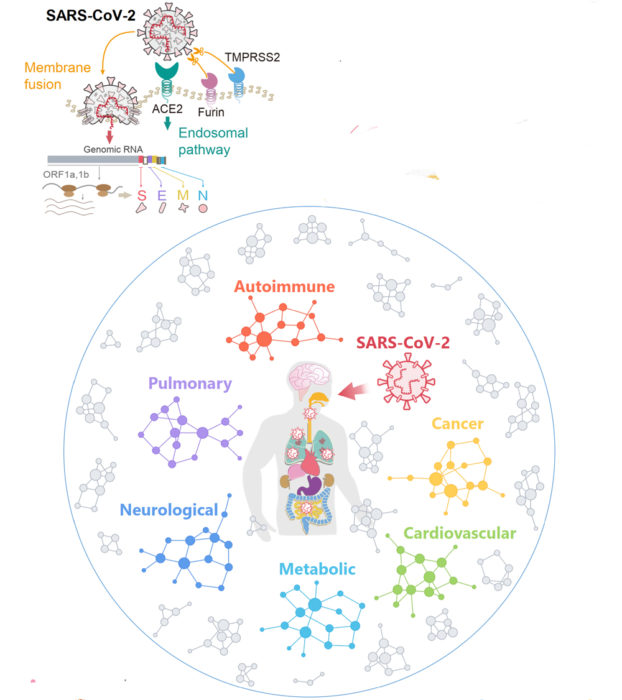
Leave a Reply
You must be logged in to post a comment.